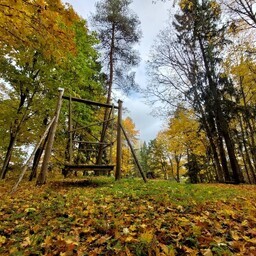
Eesti pühapaigad
Estonian Sacred Sites
Eestis on vanad ja uued pühapaigad. Need on tähtsad inimestele.
In Estonia, there are old and new sacred sites. They are important to people.
There are many sacred sites in Estonia. Some are very old. People believed that these places were special. For example, a forest or a stone where nothing should be done.
Ott Heinapuu says that the importance of sacred sites lies in what one must not do there. People sought a connection with nature there.
There are old and new sacred sites. The old ones are connected with ancient beliefs. The new ones have emerged from national romanticism. For example, a sacred grove where Estonia's Independence Day is celebrated.
Old sacred sites are connected with the time of small communities. The new ones have emerged from science.
People believed in nature. They did not distinguish between nature and culture. Science changed their understanding.
New and old sacred sites can merge. For example, Taara's Grove is a symbol of national romanticism. People create new sacred sites.
People behave differently in sacred sites. In some places, trees must not be cut down. In other places, people dance or celebrate holidays. For example, on Midsummer's Eve, people gather around bonfires.
Sacred sites are important. Some are forgotten, others are new. For example, on Estonia's Independence Day, oaks were planted. People's attitudes have changed, but sacred sites remain significant.